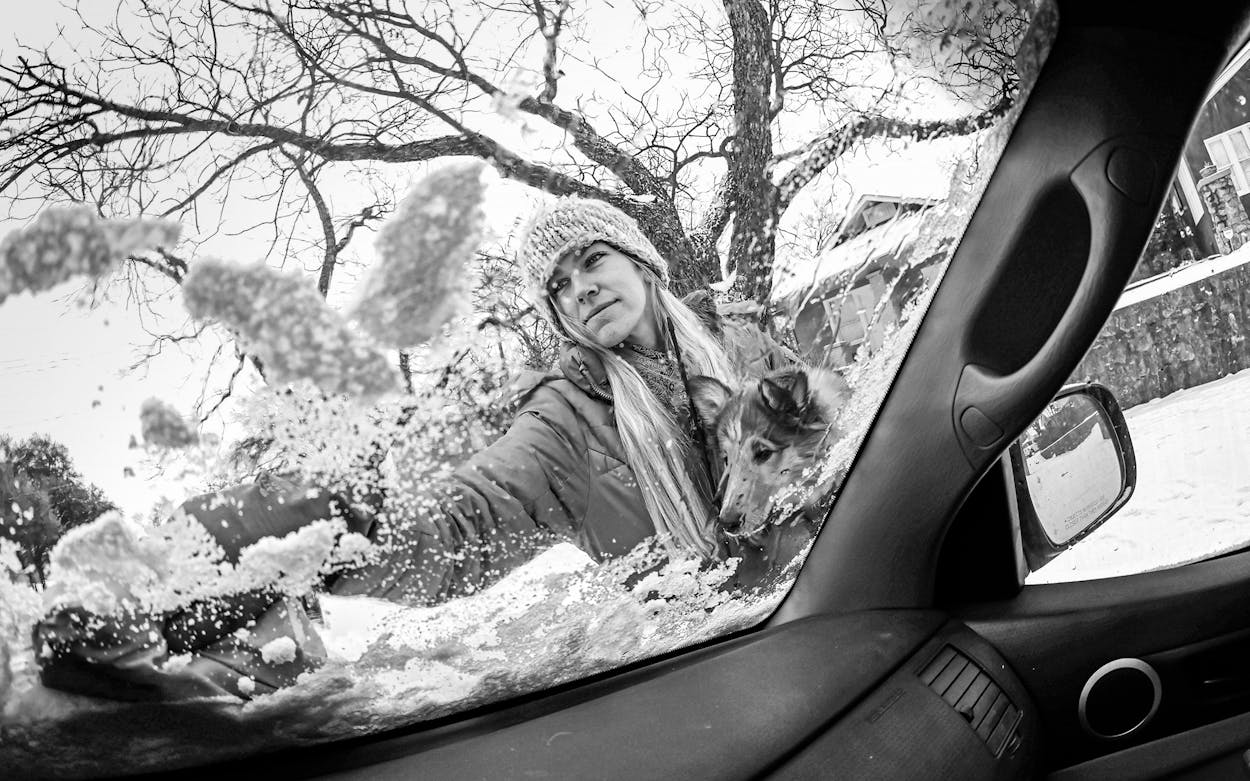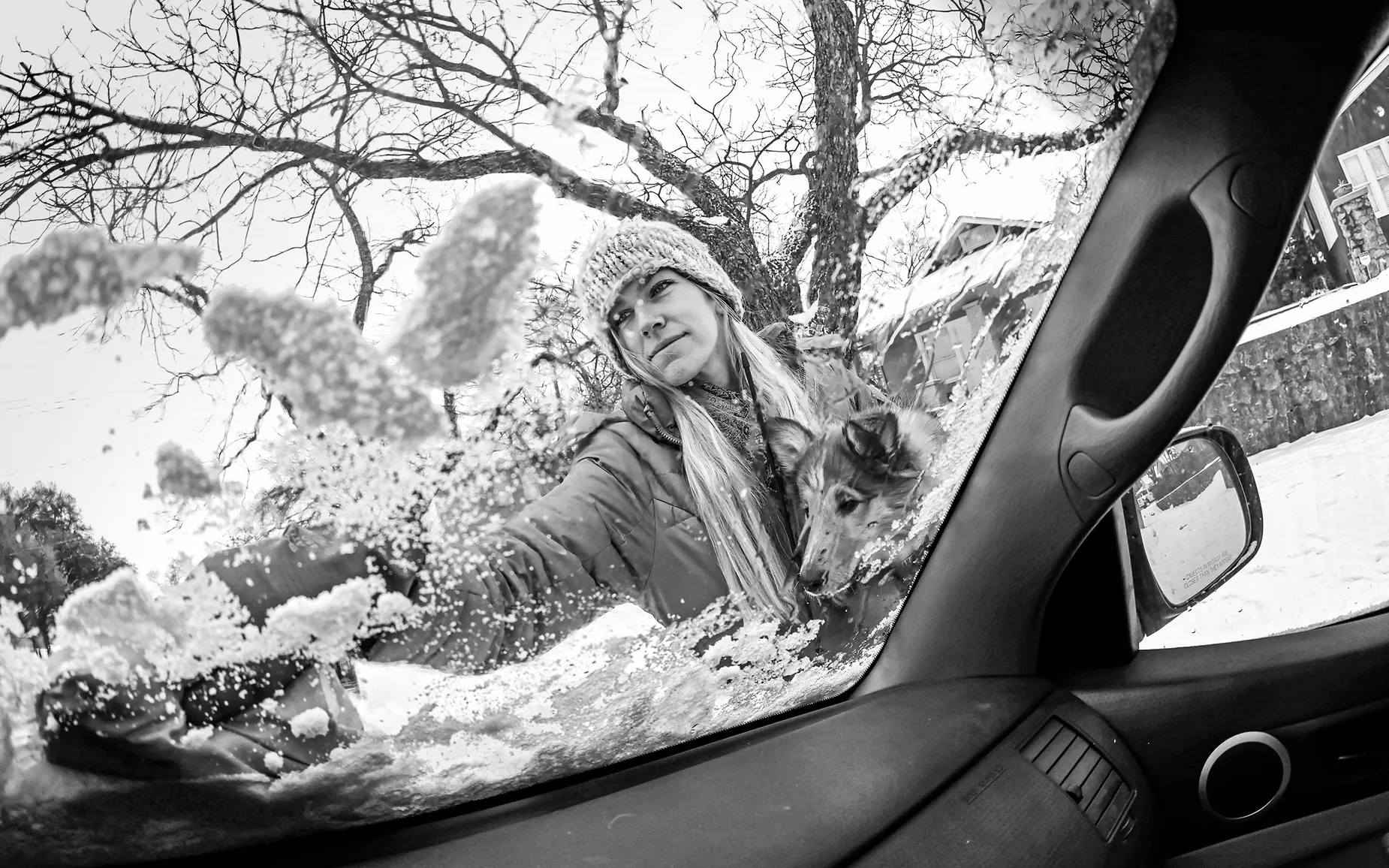14 Ways to Prepare for the Next Winter Freeze
Source: Texas Monthly
Texas experts share their best advice on emergency kits, weatherizing your home, connecting with neighbors, and more.

What home improvements can I make that are effective but not overkill?
Getting your home ready boils down to two things: insulation and education. Next time the person who services your air conditioner or heater swings by, ask if they can check to make sure your insulation is up to snuff, Kimmel suggests.
If you know you have exposed pipes, stop by the home improvement store and grab materials to insulate them. While there, you can also get a crescent wrench and maybe even a water meter key so you can shut off your water and gas if needed. Then, learn more about your utilities—where and how do you shut them off? This is when YouTube’s plethora of self-help videos comes in handy.
Another small but potentially life-changing home improvement? Invest in some battery-powered light sources, such as a lantern, so you won’t have to rely on candles, which can start fires. In a similar vein, you may need to clean your chimney and should also check that your carbon monoxide and smoke detectors are working. In fact, it doesn’t hurt to install backups for extra protection.
What should be in my emergency kit?
Fill a plastic tub or file cabinet box with batteries, flashlights, a weather radio, and enough water and nonperishable food for two to three days, with a gallon of water per person daily.
Separately, a pre-stocked go bag is a good idea in the event that you need to evacuate. It should have everything you’ll need but still be light enough to carry on the fly.
Think about necessities: blankets, socks, a can opener, a list of phone contacts, and enough cash in case your credit card doesn’t work. What helped you the most last February, or what did you wish you’d had? Now’s the time to put that in your go bag. Also, consider your mental health: distractions like a deck of cards or an engrossing book can help you pass time and stay calm.
How can I make sure my devices stay charged?
First and foremost, consider investing in a battery pack for your home. Cars can also act as makeshift charging stations (though don’t try this in the garage and risk carbon monoxide poisoning), and you may want to hold on to an old cellphone to use in emergencies. Even if it’s not on a service plan, chances are it’ll still work for a 9-1-1 call, Timmons says.
How about first aid?
Gauze, dressings, scissors, adhesive and rolled bandages—be ready if you or the kids slip on ice. Aspirin is a must in case someone starts experiencing chest pain, especially at a time when it may take a while for emergency responders to get to your home. Also consider adding an antihistamine to your kit. You never know when you’ll need it.
Stores do sell fully stocked and conveniently sized first aid kits. So if this sounds like a lot to pull together, those are an easy alternative.
What food should I keep on hand?
Protein and fiber are good for keeping your energy up and gut healthy during an emergency. You likely already have simple go-to meals, such as ramen with a fried egg, boxed macaroni and cheese, or rice and beans, that you’re comfortable making. Those are all good options, if you still have power. But if not, shelf-stable milk and tofu, beef jerky, meal kits, canned or packaged tuna could be substitutes—there are so many ways to get protein beyond meat from the fridge. Apples are good because they last a relatively long time. And, for kids, try fruit and veggie pouches.
Propane camping stoves can ensure you’ll be able to boil water and cook food during a storm. But they must be used outdoors only, to avoid deadly fumes, Timmons says.
Food expires, so make sure to keep an eye on “best if used before” dates and refresh your stocks at least twice a year.
Do I always need to have bottled water at home during the winter?
You need water to survive, and you want to have enough for everyone in the family—including pets. It also comes in handy for basic sanitation, cooking, and even flushing the toilet. So it’s wise to store at least some water at home, either in commercial bottles or your own food-grade containers. You’ll want to keep your reserves in a place that’s cool, dark, and safe from toxic substances. “It’s one of the cheapest and most prudent things that you can do,” Timmons says.
But rotate your reserves—just like food, there’s a point where old water becomes unsafe. If you go with commercial bottles, you can monitor the best-by dates. For your own water containers, aim to replace your stock every six months.
When you know a storm is coming, fill your bathtub in advance. Not all water has to be drinkable—for example, the water you use to flush the toilet or wash dishes—and having a massive tub filled with water can help supplement your stored supply.
I know that because of carbon monoxide poisoning, it’s far too dangerous to use my oven or car to heat up my home. But how can I stay warm when the power’s out?
This one’s pretty intuitive: plan on warm clothing and lots of blankets. Base layers, or thermal long underwear, can really help your body retain heat; you can get a simple set at REI or Academy Sports and Outdoors, or on Amazon.
Even if you don’t have heavy sweaters, layer your clothes. Close doors to conserve heat in one room. Close blinds if you have them, and hang blankets or sheets on windows and doors to keep the heat from escaping. And huddle up with loved ones and pets under blankets (for extra protection, try insulated sleeping bags). “That is really the safest way,” says Ana Todd, an assistant clinical professor at the University of Texas at Austin School of Nursing.
What can I do to make sure my neighbors stay safe?
It’s time to meet your neighbors. Even if it’s not the norm anymore, you should still introduce yourself and chat folks up when you pass them on the sidewalk. You can also use homeowner associations, Nextdoor and Facebook, or other social media outlets to start a conversation. See this as an opportunity to foster a sense of community while coming up with a game plan.
When it’s too dangerous to travel, you become a lifeline for your neighbors, so it’s vital to figure out who’s going to check on whom during emergencies. If you know anyone who is elderly, has a disability, or is particularly vulnerable, it may even make sense to give them a walkie-talkie, so you can stay connected no matter what.
Have their contact information handy so it’s easy to reach out often, and if you’re really worried about someone, consider moving in with them (or inviting them to your home) for the duration of the crisis. “Even if your help is declined, they probably feel a little bit of a lift just that somebody else cared,” Timmons says.
If you still want to do more, volunteer for emergency response organizations like the Red Cross. There’s no better way to learn how to be prepared than to get training and watch the experts. “When you get involved, you get educated,” Lin says. Meanwhile, if you already know you may need help, warn your neighbors. Knowledge is power, and that’ll give them a heads-up so they can make sure you have what you need.
Is it time to buy a generator? If so, what kind?
Kimmel, the UT-Austin meteorologist, has already purchased a full-house natural gas electrical generator and is waiting for it to be delivered. “I just have to because after this winter, I’ve lost some of my trust in the grid,” he says.
But not all generators are created equal. Portable models offered at home improvement stores produce carbon monoxide, and they can be dangerous—even deadly—if they’re too close to indoor areas.
Far safer are the permanent generators that are fixed in place. And, if you’re risk-averse or planning to stay in your home for a while, one of those may end up being a worthy investment, especially if you live in an area that you know is prone to natural disasters (like Houston or the Coastal Bend).
Another option is a solar installation that can provide power even if the electrical grid crashes, says Kaiba White, who works for the consumer advocacy nonprofit Public Citizen. But she acknowledges that neither solar energy nor a gas-powered generator works for everyone’s living situation.
“There’s not a one-size-fits-all, and I think really we need to focus on solutions that harness our communal resources more than each individual home trying to become, you know, self-sufficient by itself,” she says. “That’s a difficult thing to achieve, especially in a city.”
There is a caveat: anyone with a medical device that requires constant operation, such as dialysis machines or oxygen concentrators, definitely needs to find a way to make sure their life-saving equipment keeps running. Maybe that’s solar with battery backup. Maybe it’s a generator.
What can I do to make my car more ice-resistant?
For the vast majority of drivers in most of Texas, heavy-duty modifications like snow tires or chains probably don’t make sense. “It’s pretty impractical,” Timmons says. “It’s hard to drive a vehicle with chains on it.”
But all Texans should invest in an ice scraper and brush to clear off snow. It doesn’t hurt to keep bags of sand or kitty litter in the back, either, in case your tires start spinning out and you need traction. Also, make sure to swing by your mechanic, who can check your fluid levels and tire inflation.
I’m worried about what could happen if I can’t access my prescriptions. What should I do?
If anything close to freezing temperatures are in the forecast, it’s time to refill your prescriptions. You don’t want to drive or walk long distances to your pharmacy during a winter storm, so try to have at least ten days to two weeks’ worth of medication at home.
How can I make sure my pets stay safe?
Pets need access to food, water, and a warm place for shelter. Outdoor animals run a higher risk, and those who can be brought inside—even if it’s just into the garage—should be. But if that’s impossible, they’ll at least need a daily supply of fresh water that hasn’t frozen and somewhere to stay warm.
Indoor animals could still use a small coat in case the house gets cold. Some dog owners also want to come up with a plan for where their little ones—those who aren’t accustomed to the snow—will do their business. Maybe that’s a pee pad in the garage, a turf portable potty, or a cleared area outside.
“It gets really down to the basics in these kinds of things. Just like for us, right?” says Debra L. Zoran, a professor at Texas A&M’s College of Veterinary Medicine and founding member of its Veterinary Emergency Team.
You also need to think of your pets when prepping a go bag. Pack water for the trip even if it’s readily available wherever you’re traveling, and make sure to stash at least a week’s worth of the same food they eat at home. If they take any medication, keep it handy so it’s easy to grab at the last minute. Bring bowls and comfort toys, especially for dogs—“something that’s theirs, that they can use to distract themselves,” Zoran says.
During an evacuation, collapsible crates are a must. Animals can feel how stressed everyone is, and normally docile pets may experience a fight-or-flight response. They need to be contained for everyone’s safety. The crate should be big enough for them to lie down in. It should also be able to fit their food and, for cats, their litter box.
For more information on how to protect your animals during emergencies, check out the American Veterinary Medical Association’s disaster preparedness guide.
Where can I go to figure out whether a storm will be a big deal?
Local television news is a good resource, but tune in sparingly; having the TV on all the time might stress you out. Alternatively, if you pay attention to advisories, watches, and warnings from the National Weather Service, you should be all set. “They get it right nearly every time,” Timmons says. Local and regional media outlets, including the Austin American-Statesman and the Texas Tribune, also mobilized during the storm to send safety and news updates via text message.
What’s the number one thing Texans can do to stay safe in another snowpocalypse?
Stay off the roads. “Let the community heal to a certain extent. Let the ice melt,” Timmons says. Also, come up with a detailed emergency response for your family or business and make sure everyone knows it. Maybe even do a little rehearsal, just like fire drills at school. Ready.gov has a helpful page with tips.
“Plan,” says Todd from UT’s School of Nursing. “Plan, plan, plan, plan. It’s not a matter of if. It’s a matter of when.”


